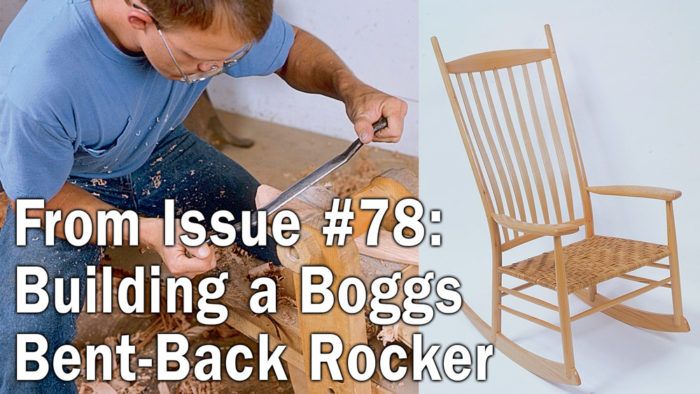Building A Bent-Back Rocker
After building more than 100 rocking chairs, Brian Boggs developed a rather non-scientific approach for designing and constructing attractive, strong and comfortable rockers from green hardwoods.

After building more than 100 rocking chairs, I’ve developed a rather non-scientific approach for designing and constructing attractive, strong and comfortable rockers from green hardwoods. My first rocking chair was a straight ladderback chair fit on runners copied from an old chair I liked. Although I was able to construct the chair fairly quickly, I didn’t like the piece’s visual balance. After more carefully studying how chairs worked, I subsequently altered seat shapes, leg angles, rocker radii and other details to improve the chair’s appearance, comfort and my construction methods. The result is the bent-back rocker, which I’ll tell you how to build in this article.
Evolution of my rocker design-All rockers, regardless of styleWindsor, ladderback or sculpted-are baSically alike. As with any chair, the frame and seat must comfortably support a sitting person’s weight. All chairs must withstand everyday use and abuse, such as the sitter moving in the chair, sliding the chair around and leaning back. These destructive forces, working to pull the joints apart, are intensified with a rocker because of the repetitive, dynamic stresses produced by its rocking motion. The character and speed of the rocking motion is controlled by the shape of the runners. By subtly modifying the runners’ curve and by adjusting the length of the legs to change how the frame sits on the runners, you can construct a balanced chair that’s both easy to get in and out of and is comfortable. These subtle changes will also smooth the rocking motion so the chair won’t awkwardly pitch forward, and won’t creep or walk across the floor as you rock. And because an optimally designed frame is consistent with a visually well-balanced chair, your rocker will be attractive. Finally, if you follow the simple rules for working with green wood, you can expect your chairs to survive hard use; you’ll be building heirlooms.
The problem with my first straight ladderback rockers was that they were too upright. They were not exceptionally comfortable, and they provided insufficient lower-back support, which consequently induced Sitting in a slouched position. Increasing the angle between the seat and the backrest eliminated the boxy appearance and provided the needed back support. I found that most people were comfortable in chairs with a 105° to 1 10° angle between the seat and backrest; increasing the angle more than this reduces the amount of head and neck support provided by the back and makes the chair uncomfortable.
For the full article, download the PDF below:








Log in or create an account to post a comment.
Sign up Log in